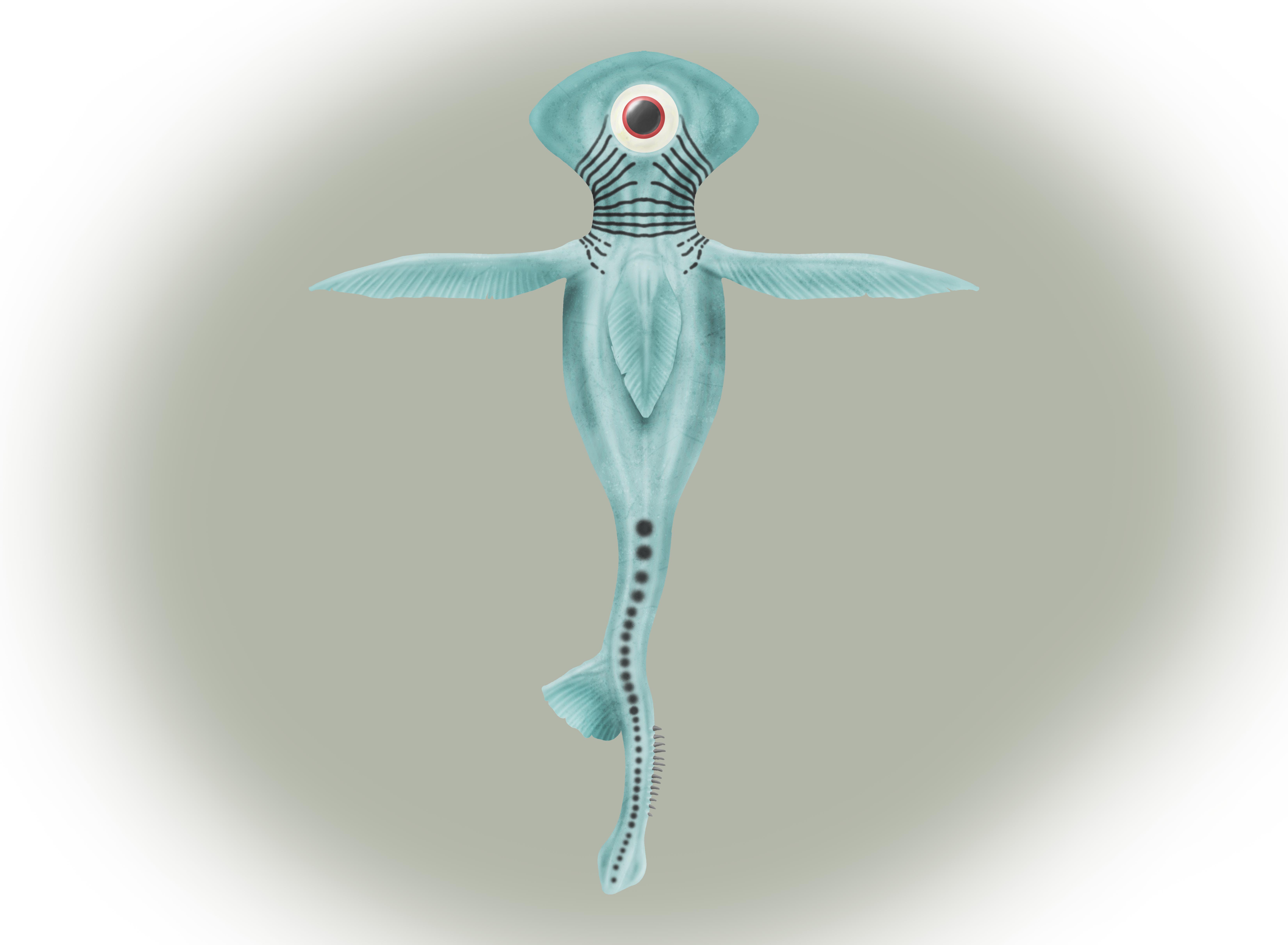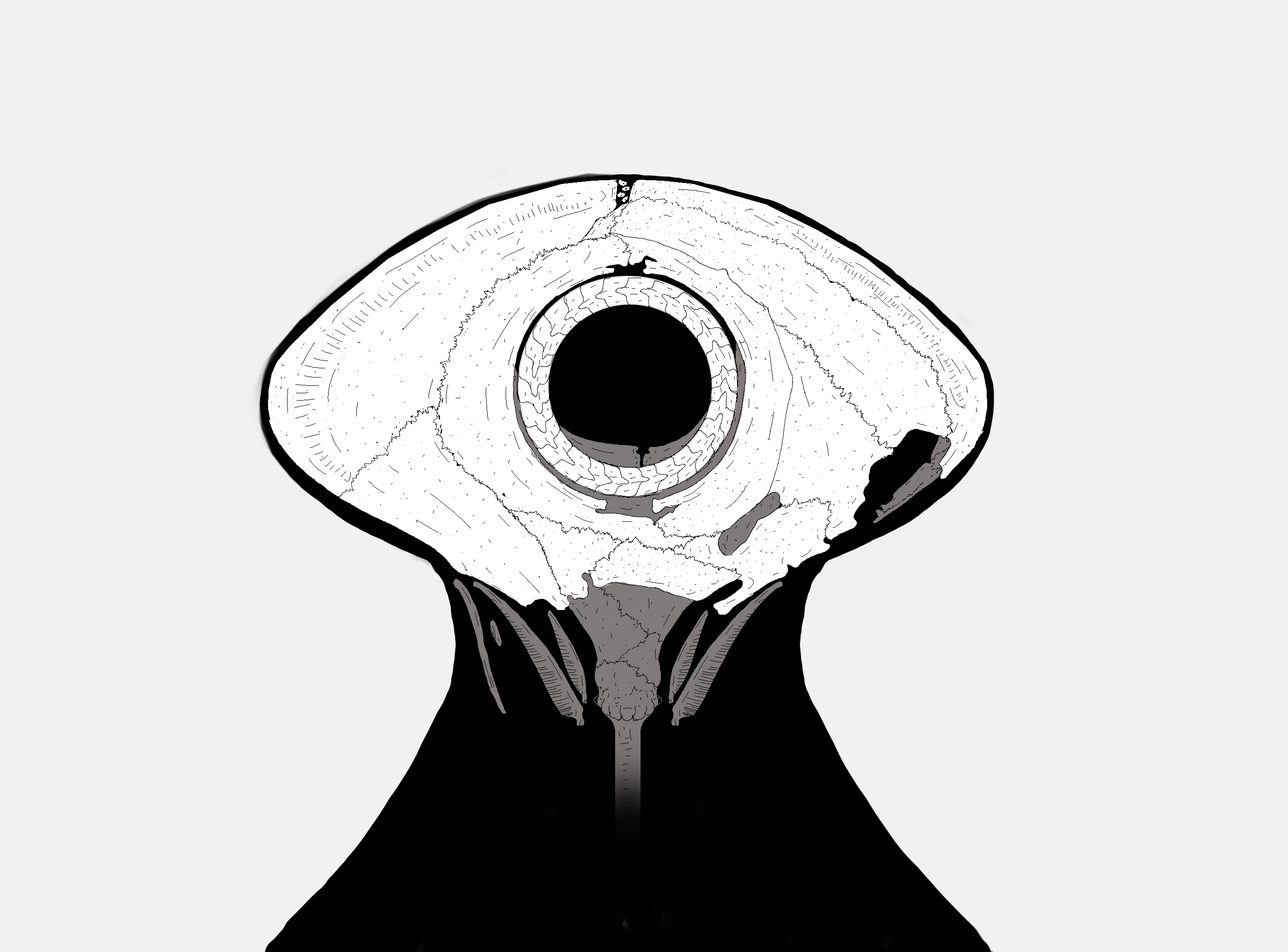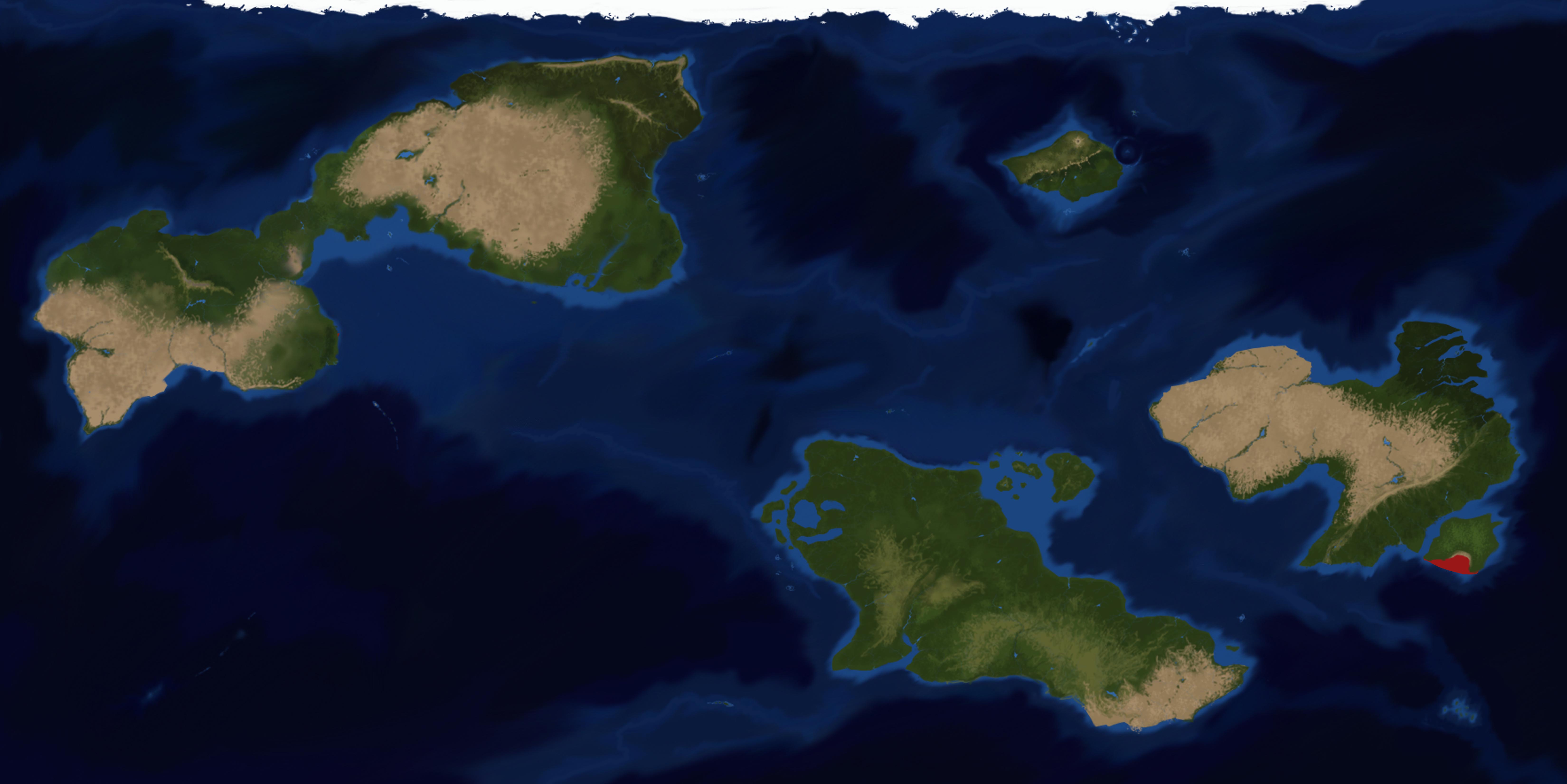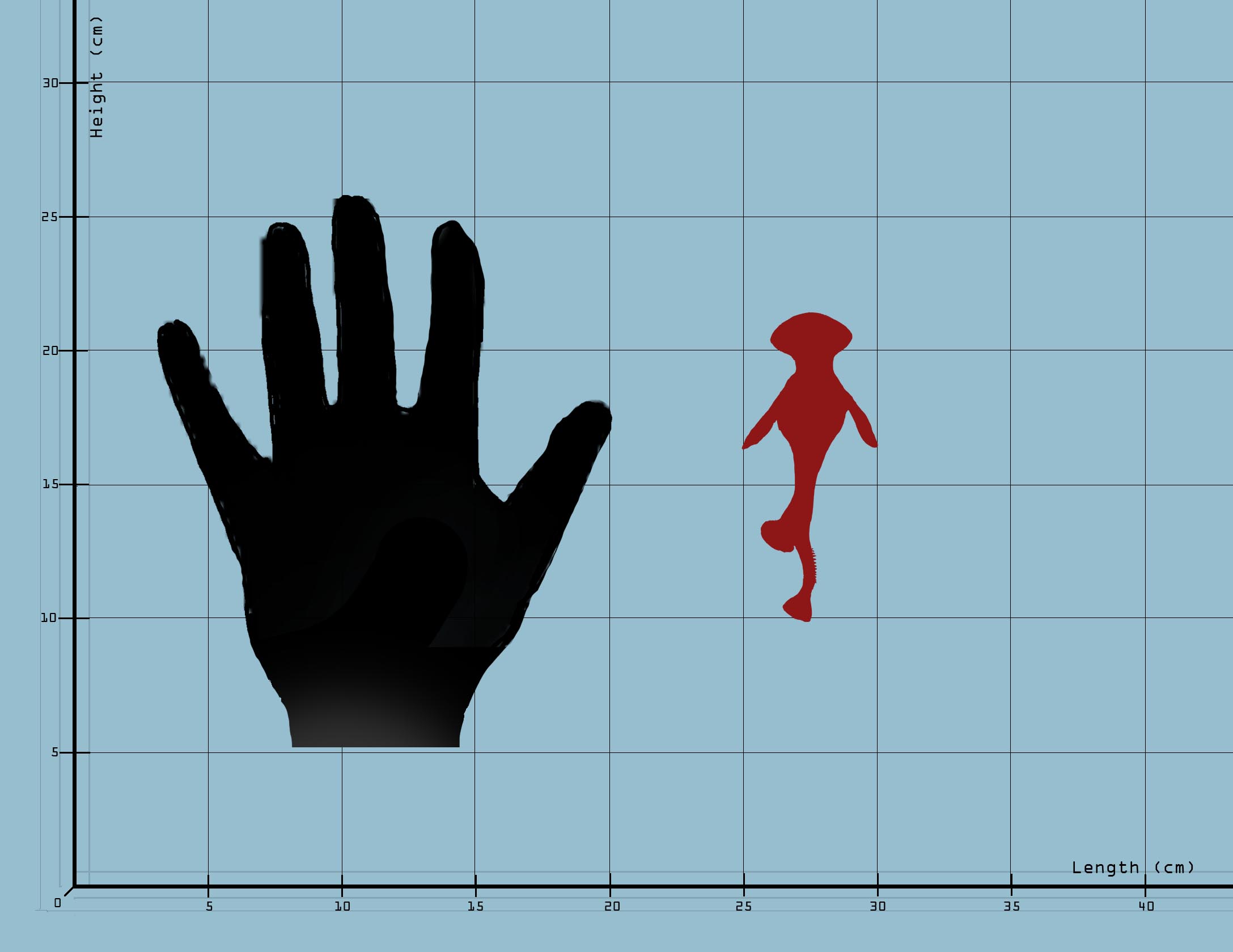Astoma inespectatus
Astoma inespectatus is one of the most puzzling lifeforms to have been discovered on Nijin-Konai as of today.
Originally described by Wellstone as an ancestor to the modern Esavelidae (Wellstone, 2397), his hypothesis was quickly scrapped by the evident lack of basal phylogenetic characters like the presence of a mouth (Jenkins, 2399b).
This then led to the creation of the genus name “Astoma” and the subsequent naming of its own subfamily, the “Astomatosinae".
For the better part of the next century the evolutionary origins of this peculiar creature remained unexplained.
As of now the Astomatosinae is considered to be a sister taxon of Esavelidae and Astooma sp. is considered to be under the order Selenopiscidae (Jenkins, 2399a).
the lack of important characters was then explained by the different mechanisms evolution uses on the planet.
Basic Information
Anatomy
- Astoma inespectatus is characterized by a slender and elongated body with two big eyes almost as big as the head itself.
- The cranial area is ventro-dorsally oblungated in a hammer shape; Mouth missing.
- Four simmetrical fins on each side of the body are used by the animal for buoyancy.
- The caudal area is long with a fin on the ventro-lateral side, used for locomotion.
- The dorso-lateral side of the tail has fourteen aculei of unknown usage.
- Gill tail is ventro-dorsally expanded and a strong caudal drop; The Gill fan is also laterally contracted.
- The body itself is flipped vertically.
Genetics and Reproduction
Male specimens enter a reproductive active stage once every two months, during which time they'll search for multiple mates to fertilize.
The active stage in males has an average duration of a week.
The female active stage is longer with an average length of two weeks and a half.
The mating takes around three minutes to completion, with males taking turns fertilizing the same female.
Male dominance during sex is dictated by the swelling and length of the parapenis, with the more swollen and longer ones claiming mating priority.
The female gestation period is of twentythree days, the eggs are laid in calm ponds between the rocks, protected by the currents.
The active stage in males is visible with the brightening of the markings near the eye and the swelling of the Parapenial sack.
The active female is distinguishable by the clear markings around the entrance of the reproductory duct.
The first time a specimen mates is in the jouvenile stage, ensuring that even if the adult population dies off, a new generation can still thrive.
Growth Rate & Stages
A newborn Astoma inespectatus is characterized by a sand coloring, adapted to the environment in which it lies right after birth; it becomes sexually fertile at two weeks of age and takes around a month to reach full adulthood.
The spawn loses its natal aculeus quickly after birth (one to two hours).
Ontogenesis not incredibly marked.
Ecology and Habitats
The newborns live in schools laying in the sand near the shores, camouflaging themselves thanks to their coloring.
Once they reach adulthood they assume the adult pigmentation and leave their native bottom feeding situation for a more epipelagic lifestyle.
Dietary Needs and Habits
Astoma inespectatus filters Zoophytoplankton through the skin of the cranial area.
During Zoophytoplankton inflorecences, these animals go into a feeding frenzy, uniting in big schools, filtering off of the most dense clouds of nutrients they can find.
Biological Cycle
The average specimen becomes sexually active at two weeks of age and never reaches sexual sterility during its life cycle.
Due to the food source relative abundance they are periannial creatures with no periods of reduced actrivity.
Additional Information
Social Structure
Rarely gregarious outside of Feeding frenzies and mating seasons.
Adults are Epipelagic, Spawns live in shallow water laying in the sand.
Can be occasionally observed in small groups.
Uses, Products & Exploitation
This species has no use outside of the illegal pet trade, where some poached individuals can rarely be found.
Perception and Sensory Capabilities
Astoma inespectatus is highly focused on sight, with disproportionally large eyes on the side of the head.
Scientific Name
Eoichthyia; Tartarosomnia; Rotunducephalidae; Gladiopinneoidea; Quadratocephaloidea; Selenopiscoidea ; Pseudoastomatosidae; Astomatosinae; Astoma; A. inespectatus
Lifespan
3 years
Conservation Status
CRITICALLY ENDANGERED: This species survives only in small numbers in a restricted area of the Neygambian Sea.
Currently some measures on the conservation of the species have been taken by local governments and environmental agencies to prevent its extinction.
Population trend: DECLINE
Average Weight
20 to 40 gr
Body Tint, Colouring and Marking
Body azure in overall coloring with dark blue stripings along the cervical area and around the eye.
Dark spots allong the tail on both sides.
Remove these ads. Join the Worldbuilders Guild













Comments